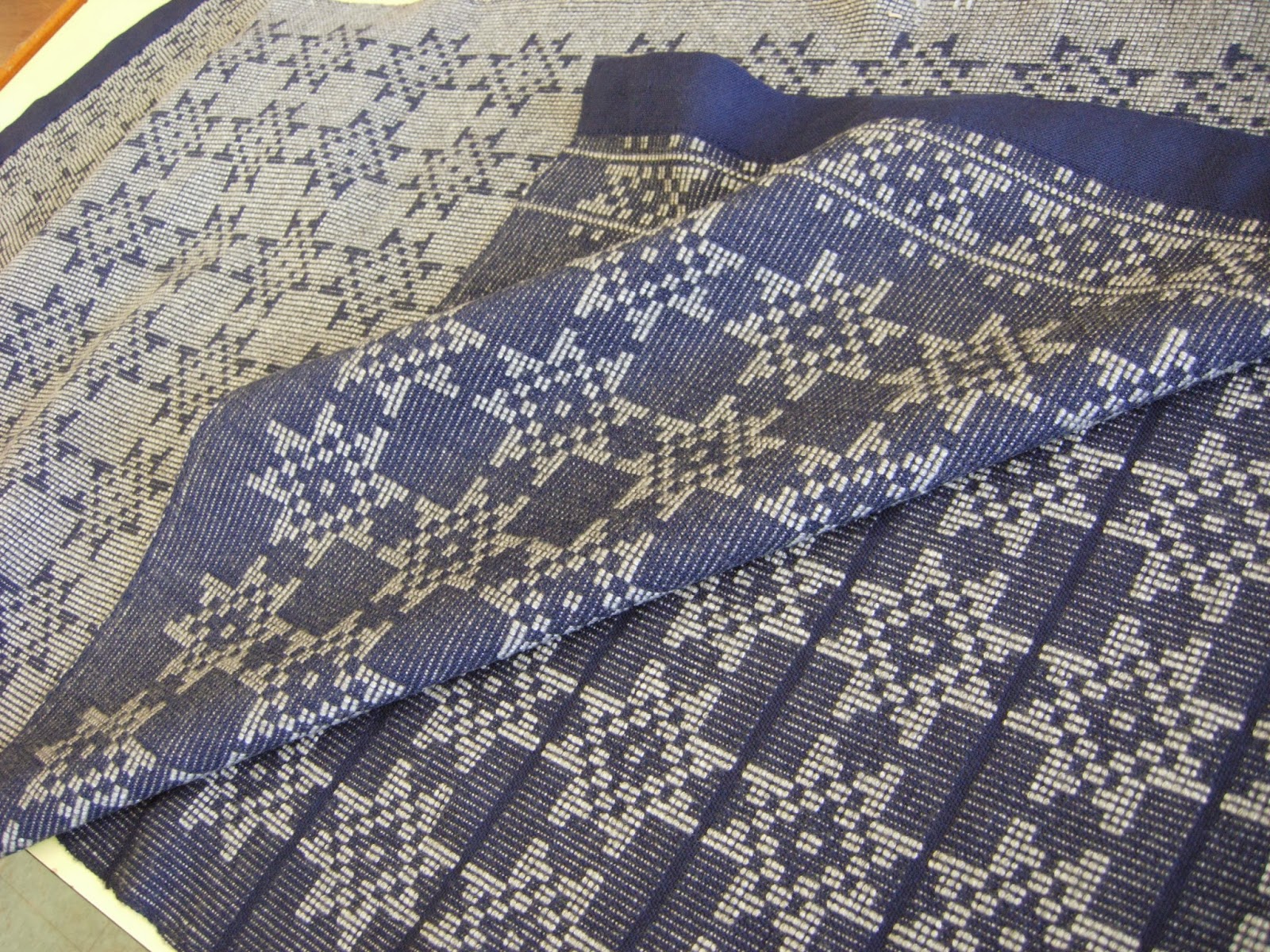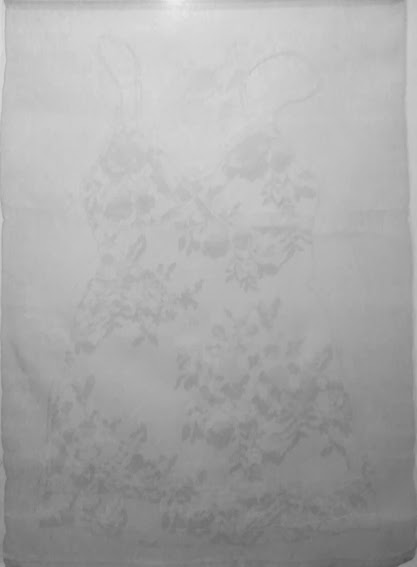My place in the weaving class is of course to teach weaving. But often registrants in the class have lessons that I take from them. This week the lesson that stood out was that we're never too experienced (or conversely inexperienced) - lesson #1 . We're always learning new things, reviewing old lessons, revisiting previous knowledge that might not be that helpful and replace it with new practices that deepen and enrich our weaving experienced. Judite Vagners for instance, has been weaving probably for 40 years now at least. She is as productive as ever, out producing many a younger person. She continues to take whatever opportunity she can to increase her expertise, technique, and practice. Another way you can do that is take obtain your certificate course in weaving (and/or spinning) from the Ontario Handweavers and Spinners.

What do good weavers do? Lesson #2 - keep an open mind. Lesson 3 - They are not embarrassed to make a mistake, be confused, or consider another weaver's take on things. We admit to failures, disasters, and share our successes. A good weaver tests and retests their hypothesis, their conclusions, their assumptions as they might check and re-check their threading. Lesson 4 - Sample, sample, sample. In both pictures above, Susan Abrams decided to sample a page taken from the Handweavers Pattern Directory to see what the results would be like. The results for Susan will be different for each us as we all have slightly different weaving technique.
Marion Kirkwood too has recently undertaken to sample, something she willingly admitted she hardly ever does. Most weavers don't and don't want to....because of course, we just want to get weaving our project! Above, Marion's just completed throw in Lemieux 2 ply yarn.
Last week I took a sick day that coincided with the snow storm. That day, I sat at the loom and it had been awhile since I had had the time in the studio. That is to say, Lesson 5 - uninterrupted time to concentrate on weaving. What a gift it was. It settled and focused the mind. In the photo above of the blue and green shawl, Karen Bota also demonstrated exemplary weaving practice. This is her first weaving project after her sample. The 2/8 bamboo shawl , using a pattern from the Handweavers Pattern Directory on page 61. The project had many threading challenges for Karen, but she persevered. Good weaving practice ...... Lesson 6 - don't back down when the going get tough in a project and to see it through.
Runners by Judite Vagner
taken from Harriet Tidball's Canadian Weavers Guild Christmas Bulletin sample. The sample was meant to be a snowflake for a Christmas card and Judite repeated the motif to create the runners. And that brings me to .....
KNITTERS LOOM CORNER
Lesson 7 - learn about unfamiliar weaving equipment and techniques. The nice thing about the knitters loom is that it allows for spontaneity and doesn't require as much planning. That too is important in our weaving practice. It enhances creativity and increases joy!
Arlene Williams first project on her newly acquired knitters loom. She created the scarf to go with a hat she made for her mother.
Karen Bota, sock yarn scarf
Carole Hibbert just bought a 28" knitters loom from me. She also bought a stand to attach it to. Perfect if you don't have any table space at home. It was super easy to assemble and disassemble.
Lesson 8 - be helpful and supportive of others in their weaving forays, learning and experimentation.
FATE, DESTINY AND SELF DETERMINATION : an international tapestry project
left to right: Bambi Rutledge, Tina Patsourakos and Christine Shipley . Below, Jutta Polomski help out with the finishing for the international tapestry project, Fate, Destiny and Self Determination. You don't have to be a tapestry weaver to help and be included as one of the makers of the project!
lesson 9 - take weaving workshops from as many different people you can. Each person has a wealth of experience, practice and knowledge and even if you know a lot, there is always something to be gained from another weaver. Plus, it's a great way to make new friends!
June Weaving Workshops
WOVEN SHIBORI June 2-6 2014 (5 days) $350 Burr House, Richmond Hill, On
Kathleen Morris is a Toronto-based designer/maker and educator working in the field of textiles. Her work has been exhibited at Prime Gallery, the OCC Gallery, David Kaye Gallery, the Guild Shop, and Craftworks. Her retail line of woven, resist-dye fabrics have been the mainstay of her textile production as have both publicly and privately commissioned works. Her public commissions include projects for Toronto's Metro Hall and Ontario's Expo pavillion. Her private commissions include innumerable film and theatrical assignments. Kathleen is an instructor in the Fibre program at OCAD University, recently completing her Masters, as well as an artist-educator in the Toronto District School Board. Materials must be purchased from the instructor. A 4 shaft or 8 shaft loom is required. Warps will be prepared in the workshop. Contact: Line Dufour tapestryline@sympatico.ca
Deadline to reserve: April 30, 2014
CRIMP AND CREATE June 10-12 2014 (3 days) $350 Burr House, Richmond Hill On
This is an on-loom workshop taking fiber in a new direction by creating “crimp cloth.” Using a variation of woven shibori for both warp and weft, learn to create fabric with permanently crimped designs that hold their memory even when washed. Participants will draft, weave, and crimp their samples in class to discover the endless possibilities. Learn how the fabric can be used for entire garments as well as for permanent pleating to replace knitted ribbing for a sweater or to add a knit look to the collar area of a jacket. Sewing tips for using this amazing cloth will be included. No dyeing involved. Skill level: Advanced beginner and beyond. Equipment required:
4 to 8 shaft loom
Contact: Line Dufour tapestryline@sympatico.ca
Deadline to reserve: April 30, 2014

FONDAZIONE ARTE DELA SETA LISIO, Florence Italy June 23-27
2014
Instructor: Eva Basile - Intro to Jacquard Textiles
Explanations and examples of what damask, double cord
damasks, brocaded damasks, lampas, double cloth, (figured) velvets,
brocades, brocatelle, taffeta, satin, samite, diaper and other luxury fabrics,
analysis of fabrics, learning the European notation system for drafts,
introduction to using manual jacquard looms and sampling existing patterns,
Studying the textiles depicted in paintings of the Renaissance found at the
Uffizi and other museums and galleries in Florence such as
the Costume museum, and the Museum of Textiles in Prato.
Lisio has designed and executed fabrics for the Vatican,
movies such as the Agony and the Ecstasy with Charles Heston and Rex Harrison, The
Taming of the Shrew with Elizabeth Taylor and Richard Burton and has created
designs for Fendi among many other designers such as Versace. They continue to
collaborate with universities, musuems and art galleries all over the world in
doing research and consultation. The course is $1500. Students must arrange for and pay for their
own transportation. Accommodation is included in the price. Meals are an additional cost. To register or
reserve your spot contact Line Dufour at tapestryline@sympatico.ca. A limit of
6 people will be admitted and the first six people to send a $250 deposit (non
refundable) will ensure their participation in this very special opportunity.
Some knowledge of weaving is required. Deadline to reserve: May 1 2014
Lesson 10 - go to weaving conferences when you can! They happen all over the world.


























